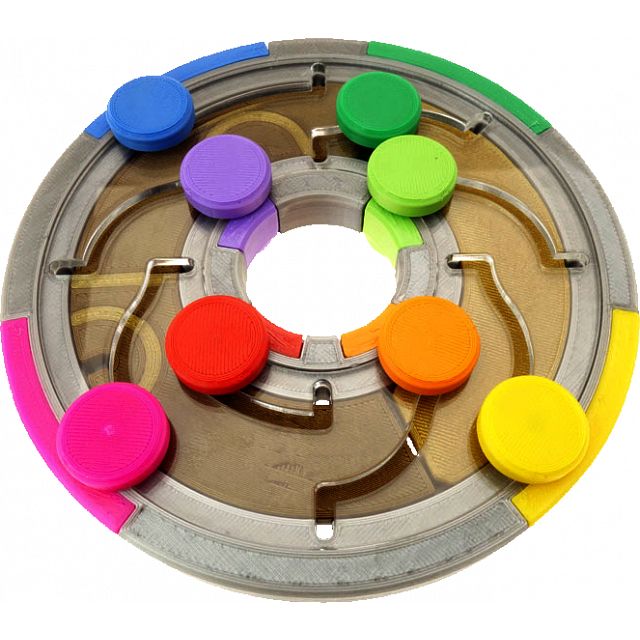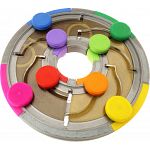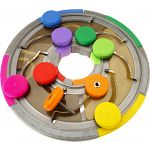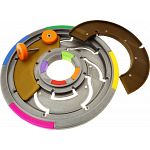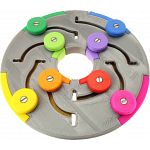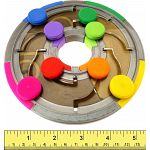Binary Disk
- Object
- Arrange the colored tokens into a cross.
- Difficulty
- Level 8 - Demanding
- Brand
- Oskar Puzzles
- Dimensions
- 13.6 cm x 13.6 cm x 2.6 cm / 5.4 in x 5.4 in x 1 in
- Packaging
- Plastic Bag
The concept of the Binary Disk was invented in 1988. After forgetting about this design for 34 years, Oskar van Deventer finally made a prototype using 3D-printing.
The object of the puzzle is to move the eight colorful tokens across the disk. By doing this, the tokens push the slider inside the disk. The original puzzle turned out to be not very interesting. To make the puzzle more interesting, the symmetry in the groove pattern was broken, the slider was split differently, two notches were added to the slider, and a pointer line was added. The puzzle is solved when the eight tokens form a cross, being parked at their "home" position.
There are eight canonical solved states, where the pointer line is pointing to each of the eight colors at the edges of the disk. Because of the broken symmetries, each challenge has a different solution path and difficulty.
The puzzle took 16 hours to 3D print on a Dutchy 3D printer. 56 meter of 1.75-mm PLA filament was used to print it. The laser cutting of the transparent acrylic disk took 10 minutes. It took significant effort to insert and embed the magnets, change filament, glue inserts, cut bolts and assemble.
Deisgned by Oskar van Deventer, who has created many different puzzles including his brand of Oskar Puzzles which are mechanical puzzles and objects that can only exist thanks to 3D printing technology. Since 1978, he has been creating hundreds of mechanical puzzles, making him one of the world's most prolific designers. Several of his innovative designs are commercially available.
